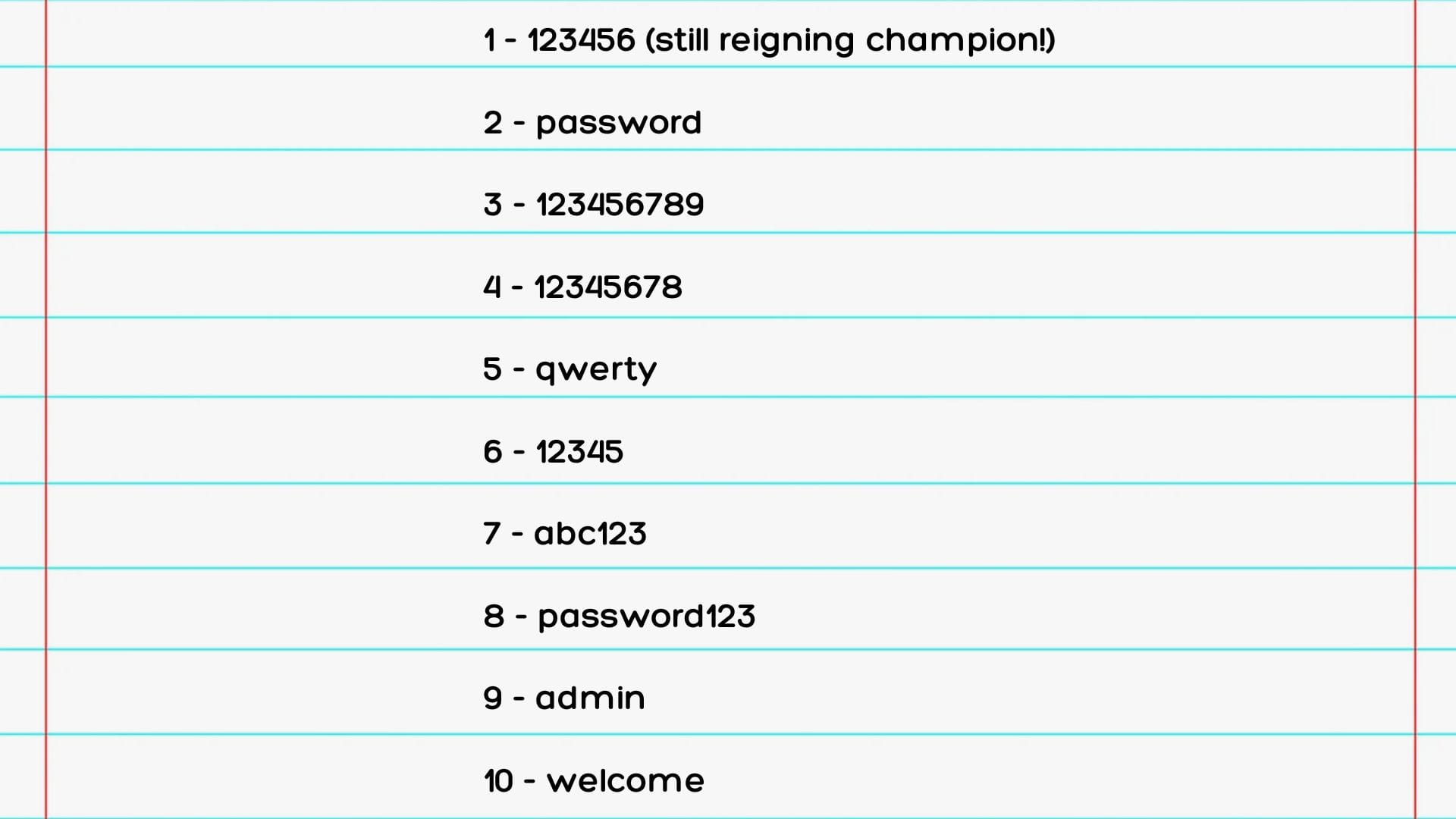Coffee With Tanya #27
Talking about: Intuitive Vibe Coding, Microscopic Art, Superwood, Gatsby’s Revival, Password Fails, May in History.

Hello, coffee lovers!
As spring blooms and summer approaches, I'm back with a collection of fascinating global discoveries. As always, there’s so much that’s new and so many hidden gems in our history. I love seeing how innovation and cultural shifts keep reshaping the way we see technology, art, and literature and share with you all.
Here's what we have on our menu for today:
- Tech - Vibe coding: When programming meets intuition 💻
- Art - The microscopic world of tiny masterpieces 🔬
- Innovation - Wood that's stronger than steel (seriously!!) 🌳
- Culture - How Gatsby conquered America's classrooms 📚
- Security - The passwords everyone is still using 🔐
- Word bites - Fernweh 🔡
- May in History 🌍
"The future belongs to those who learn more skills and combine them in creative ways" // Robert Greene
Vibe Coding: When Programming Meets Pure Intuition 💻
You've probably heard the term "vibe coding" floating around tech Twitter, maybe seen it in a LinkedIn post, or perhaps you've even tried it yourself during a late-night coding session.
But what exactly is vibe coding, and why is everyone suddenly talking about it?
Let me break it down for you: vibe coding is essentially the jazz improvisation of the programming world 🎷. It's when you ditch the carefully planned architecture diagrams, skip the detailed pseudocode (what?! here), and just... start coding based on pure intuition and feel.
Here's how it works: Instead of carefully planning out your code architecture, vibe coders dive straight in, letting their subconscious mind guide the process. They trust that years of programming experience have created neural pathways that know what to do, even when their conscious mind doesn't have a clear plan.
And the best part? It’s not just for programmers. If you’ve got an idea and want to see it come to life, just start writing your story, add a bit of imagination (and common sense), and voilà! That quiz game you wanted to play with your son? You built it!
The philosophy behind it:
- Code first, debug later (way later)
- Trust your programming instincts
- Embrace the "happy accidents" that lead to unexpected solutions
- Flow state over rigid structure
Why it's gaining traction: Surprisingly, many developers report that their most elegant solutions come not from careful planning, but from those moments when they stop overthinking and just... code.
It's like the programming equivalent of "beginner's mind" in Zen Buddhism 🧘♀️.
The controversy: Traditional software engineers are having heated debates about this approach. Some argue it's just glorified spaghetti coding, while others swear it's unlocked their most creative solutions.
What interests me most is how this reflects a broader cultural shift toward trusting intuition in traditionally logic-driven fields. Sometimes the best path forward isn't the most planned one – it's the one that feels right.
And of course, eventually it's always the balance between things.
Would you trust your vibe to write critical code? 🤔
The Microscopic Universe of Tiny Masterpieces 🔬
You know how you fancy a trip to the museum to admire those grand sculptures that tower over you, making you feel wonderfully small in the presence of artistic greatness?
Well, did you know there's an opposite world of art that's so tiny you'd need a microscope just to see it exists?
Meet David A. Lindon, the British micro-artist who just shattered the world record for the smallest handmade sculpture – a microscopic red Lego brick measuring just 0.00099 by 0.00086 inches. 🤯
That's roughly the size of a white blood cell! 🩸
The mind-bending details: This masterpiece is four times smaller than the previous record holder. To put this in perspective, you could fit about 40 of these sculptures across the width of a human hair.
The incredible precision required: Lindon has to work between his own heartbeats to avoid disturbing his creations. Imagine that level of concentration – literally timing your artistic process to the rhythm of your cardiovascular system!
His portfolio of impossibility: Beyond the record-breaking Lego brick, Lindon has created microscopic recreations of Van Gogh's "Starry Night," "Sunflowers," and "Self-Portrait" – each measuring just 0.5 by 0.4 mm and embedded within watch mechanisms. He's even crafted a tiny version of Banksy's "Girl with a Balloon," complete with a 24-carat gold frame and custom-made microblades for the "shredding" effect.
The tools of the trade: Working with materials like Kevlar, nylon, and crushed pigments under extreme magnification, Lindon manipulates matter at a scale where the laws of physics start behaving differently.
What I love here is how this art form challenges our perception of scale and significance. In a world obsessed with going bigger, louder, and more spectacular, there's something profoundly moving about art that whispers so quietly you need advanced technology just to hear it.
Check his website!

Revolution in Wood: When Trees Outperform Steel 🌳
Not sure you're ready for it, but everything you thought you knew about building materials is about to be turned upside down!
Too much? Maybe. But hey – how often does someone invent Superwood?
A Maryland startup called InventWood is preparing to mass-produce something that sounds like science fiction: "Superwood" that's 50% stronger than steel while being six times lighter.
Yes, you read that correctly – wood that outperforms steel 🤯
The shocking stats:
- 50% more tensile strength than steel
- Six times lighter than steel
- 10-20x strength improvement over regular wood
- Class A fire rating (more fire-resistant than you'd expect!)
The science: Dr. Liangbing Hu at the University of Maryland developed a process that chemically treats ordinary basswood and compresses it, creating additional hydrogen bonds that unlock the incredible strength hidden in every tree.
The beauty: Unlike cold steel, Superwood keeps all the warmth, texture, and grain patterns architects love while delivering unusual structural performance.
The win: It's carbon-negative, biodegradable, and InventWood's Maryland facility will produce 1 million square feet annually starting this summer with $50+ million in backing.
What stands out to me is how this marks a shift back to natural materials, improved through modern science. Rather than replacing nature with synthetic alternatives, we're beginning to understand how to work with its own built-in strengths.
How Gatsby Conquered America's Classrooms 📚
Picture this: F. Scott Fitzgerald, worried and forgotten in 1940, writing to his wife Zelda, "My God I am a forgotten man. Gatsby had to be taken out of the Modern Library because it didn't sell."
Seven months later, he was dead, convinced his masterpiece was a failure.
Fast-forward to today: "The Great Gatsby" is required reading in more than half of America's public schools 📚, with roughly 17 million students encountering Nick Carraway and that famous green light each year.
How did a "failed" novel become America's most assigned book? 🎓
- WWII revival: In 1945, 155,000 copies of The Great Gatsby were sent to American troops 🪖, giving the forgotten novel a new audience.
- Perfect for analysis: With fewer than 200 pages and rich symbolism (green light, Doctor T.J. Eckleburg, valley of ashes), it aligned well with the New Criticism movement, which emphasized themes and structure over personal connections.
- Timeless themes: Teachers connected Gatsby’s excess to modern eras – from Reagan's 1980s to Trump-era wealth – highlighting enduring issues of privilege and carelessness.
- Fitzgerald’s vision: In 1920, he wrote, "An author ought to write for the youth of his own generation, the critics of the next, and the schoolmasters for ever afterward." Mission accomplished!
The irony is delicious: a book about the corruption of the American Dream became essential to the American educational experience.
Sometimes the greatest success comes disguised as failure.
What other "failed" works do you think might find their moment generations later?
The Passwords Everyone Is Still Using (They're Terrible) 🔐
Well... take a deep breath – these stats are cringeworthy enough to make any cybersecurity expert double-check their firewall and cry into their coffee. ☕
After six years of studying password habits, NordPass just released their latest analysis of 2.5TB worth of leaked passwords, and honestly? We humans haven't learned a thing 🤦.
The hall of shame (top 10 most common passwords):

The (not so) shocking findings:
- Work passwords = personal passwords (we literally bring our terrible habits to the office!)
- "123456" has won "world's worst password" 5 out of 6 times – it's the McDonald's of passwords 🍔
- Zero improvement despite years of data breaches and corporate training campaigns
- Most common passwords crack in under a second (your grandmother could do it with a potato)
- Passkeys exist and solve everything, but adoption is glacially slow because change is hard
The fundamental rules we keep ignoring:
- Use at least 20 characters
- Mix uppercase, lowercase, numbers, and symbols
- Never reuse passwords
- Use a password manager (seriously, just do it!)
What fascinates me is how this represents a perfect example of the gap between knowing what we should do and actually doing it. We all know these passwords are terrible, yet millions of people keep using them.
Sometimes I wonder if the real security threat isn't sophisticated hackers – it's our own predictable laziness! 😅

Word Bites! 📚🌟
Today we have... Fernweh 🌍
This beautiful German word perfectly captures that deep, aching desire to travel to distant places – literally translating to "distance pain" or "far-sickness." It's the opposite of homesickness; instead of longing for home, you're yearning for places you've never been.
Fernweh describes that specific restlessness you feel when scrolling through travel photos, watching a documentary about remote islands, or simply staring at a world map and feeling pulled toward the unknown. It's wanderlust with a touch of melancholy – the bittersweet recognition that the world is vast and your time to explore it is limited.
May in History
- May 1, 1886 – International Workers' Day ⚒️
The Haymarket Affair in Chicago sparked the international labor movement when workers demanding an 8-hour workday clashed with police, leading to deaths and trials that made May 1st Labor Day in most countries worldwide. - May 14, 1948 – Israel Declares Independence 🇮🇱
David Ben-Gurion proclaimed the establishment of the State of Israel, fulfilling decades of Zionist aspirations while setting the stage for ongoing regional conflicts that continue to shape Middle Eastern politics. - May 20, 1932 – Amelia Earhart's Solo Atlantic Flight ✈️
Amelia Earhart became the first woman to fly solo across the Atlantic Ocean, landing in Ireland after a 15-hour flight and inspiring generations of women to pursue careers in aviation and break gender barriers. - May 25, 1977 – Star Wars Premieres 🌟
George Lucas's space opera opened in theaters, revolutionizing filmmaking with groundbreaking special effects and spawning one of the most successful entertainment franchises in history. - May 29, 1953 – Edmund Hillary Conquers Everest 🏔️
Edmund Hillary and Tenzing Norgay became the first confirmed climbers to reach the summit of Mount Everest, achieving one of humanity's greatest mountaineering accomplishments and opening the era of high-altitude adventure tourism.
That's all for today... Stay tuned for the next coffee with me in June!
You can also find me writing about Product management (tips and best practices) on LinkedIn or my second blog, Product Palette, rating movies on IMDB, or making awesome playlists on Spotify.
You're one of 96 curious humans reading this. If there are topics you want me to explore, send them my way. Ciao! ☕
And if you got this from someone you know, feel free to hit the subscribe button.
